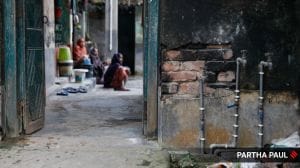In just 4 mins, death engulfed the burning Punjab Mail coach
BHUSAWAL, FEB 20: Everyone who is familiar with a journey on the country's railway network knows that in four minutes, a train does not ev...

BHUSAWAL, FEB 20: Everyone who is familiar with a journey on the country’s railway network knows that in four minutes, a train does not even get on the move. Passengers who survived Saturday’s inferno on the Mumbai-Firozpur Punjab Mail know that four minutes meant the flicker between life and death: That was the time it took for the fire in the S-8 coach to swallow 18 people.
Everything, including the crowds in the train, seemed normal when it arrived at Bhusawal. The train was running behind schedule, so that it left Bhusawal at 10 am. At 3.26, the train passed Durkheda. At 3.38 am, says Namedeo, the gateman at the nearest railway crossing, the flames began to spread, and by 3.40, the train ground to a halt. In four minutes flat, every passenger except 18 in the train had jumped to safety. The survivors crossed the site of an `explosion’ to fields on either side.
Twenty-four hours later, on Sunday, plastic bags and cardboard cartons do not give the faintest idea of their containing body parts. And asrelatives of the dead struggle in vain to identify their near and dear, the lucky survivors have one question on their minds: What caused the flames to spread like wildfire? Also, why did the fire spread across coaches towards the engine and not the other way?
“The first agent could have been anything — cigarettes, alcohol or the very obvious short circuit, but I refuse to believe any of these could have created the rapid wave of flames that spread over the surface,” says 26-year-old software engineer Anil Yadav from Antop Hill, Mumbai.
Yadav was fast asleep in a berth in S-8 when he heard shouts of `fire, fire’. He did not know it then, but the warning came from a 40-year-old businessman from Lucknow, Deepak Aurora, who was perched atop a suitcase and wondering whether the ticket examiner would allot him a berth. Aurora, being the only passenger awake in the coach, was the first to see the fire.
Aurora’s shout served as a warning to the 100-odd passengers of S-8, who woke up to see flames and thickblack clouds of smoke. “You couldn’t tell your right hand from your left,” says D S Aswal, instructor at the International Maritime Institute, Noida, Uttar Pradesh. Anil jumped from the upper berth to see a man with a blanket wrapped around him running towards the exit. This man, from all accounts of survivors, was the first victim of the fire. The fire began from behind seat number 1, at the entrance of coach S-8. This man was sleeping in the space in-between, right from Mumbai. Noone could to see his face, as he had pulled the blanket over him most of the time. But none of the survivors have corroborated the Railways’ version that there was a confrontation between two intoxicated passengers.
But perhaps the most tragic aspect of the incident was the mysterious shutting down of the vestibule between S-8 and S-9, minutes before the fire. That left the passengers with only one place to go to: S-7. Furthermore, except for the door between S-8 and S-9, others all were open.



- 01
- 02
- 03
- 04
- 05




























